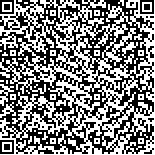夏楠,何畅,李飏安,等.网状脊髓束激活对上肢精细运动中预期性姿势调节的影响[J].中华物理医学与康复杂志,2023,45(1):35-41
扫码阅读全文

|
| 网状脊髓束激活对上肢精细运动中预期性姿势调节的影响 |
|
| |
| DOI:10.3760/cma.j.issn.0254-1424.2023.01.007 |
| 中文关键词: 网状脊髓束 预期性姿势调节 惊吓反应 上肢精细运动 |
| 英文关键词: Reticulospinal tract Anticipatory postural adjustment Posture StartleReact effect Fine movement Upper limb movement |
| 基金项目:国家自然科学基金(U1913601) |
|
| 摘要点击次数: 4838 |
| 全文下载次数: 4844 |
| 中文摘要: |
| 目的 观察不同难度的上肢精细任务中预期性姿势调节(APA)的特征变化,并探究网状脊髓束(RST)激活对其APA的影响。 方法 本研究采用了双变量混合设计,包含4种不同测试任务和3中不同任务启动状态。共招募健康右利手男性13例进入测试。受试者须根据耳机中的声音提示随机完成前向触碰、杯状抓握、拇指夹卡片和小指夹卡片四种任务,各10次。每种任务测试中有一半的任务启动提示音为114 dB的白噪音,以诱发惊吓效应激活RST;另一半为80 dB的嘟嘟声,作为常规对照。使用表面肌电记录受试双侧胸锁乳突肌、下斜方肌、背阔肌、腰段竖脊肌以及右侧三角肌、桡侧腕屈/伸肌的全程肌电。并在随后处理中,将肌电时域和频域指标转化为目标肌肉的启动反应时、达峰时间、激活延时、APA或补偿性姿势调节(CPA)幅值等进行不同任务和刺激状态的对比分析。此外,研究中根据胸锁乳突肌(SCM)提前激活与否将114 dB测试任务分别归类为SCM+和SCM-作为不同启动态进行处理。 结果 RST激活后,各任务中运动前反应时与肌肉收缩达峰时间均明显缩短(P<0.01)。SCM+、SCM-和普通状态下的三角肌反应时分别为(106.89±43.78)ms、(136.78±48.74)ms和(168.60±73.17)ms,且两两比较均存在显著区别(P≤0.01)。同一状态下的对侧斜方肌下部和同侧背阔肌APA幅值显著增高(P<0.05),但肌肉启动时序和前臂肌肉APA/CPA幅值未见显著影响(P>0.05)。小指夹取任务中桡侧腕伸肌预期性肌肉激活延时较触碰任务显著缩短[(-15.39±5.02)ms和(4.45±4.59)ms],差异有统计学意义(P<0.05)。 结论 不同难度的上肢精细任务中仅桡侧腕伸肌表现出任务特异性的提前激活;RST激活可以导致预期动作提前启动,并加速肌肉收缩和提高部分躯干肌APA幅值,但对前臂肌肉APA/CPA幅值没有显著影响。 |
| 英文摘要: |
| Objective To observe any dependence of anticipatory postural adjustment (APA) on the difficulty of fine upper limb tasks and to document any effect of reticulospinal tract (RST) facilitation on APAs during such tasks. Methods The study′s bivariate mixed design involved 4 different tasks and 3 different priming states. Thirteen healthy, male, right-handed subjects were recruited. They were asked to complete the 4 tasks of reaching, grasping a cup, pinching a card using the thumb or using the little finger, respectively for 10 times 1 in response to two different starting cues delivered through an earphone. Half of the trials with each task were initiated with 114dB white noise to startle and activate the reticulospinal tract (RST), while the others were activated with 80dB beeps as a control. Electromyographic signals were recorded from the bilateral sternocleidomastoid (SCM), lower trapezius (LT), latissimus dorsi (LD), lumbar erector spinae and right anterior deltoid muscles and also from the right flexor and extensor carpi radialis muscles (ECR/FCR). In the subsequent processing the electromyographic time domain and frequency domain indicators were converted into a pre-motor reaction time, a time to muscle peak contraction, an activation latency, and APA or compensatory postural adjustment (CPA) amplitude of the tested muscles. These were compared among the different tasks and stimuli. In addition, the 114dB test tasks were classified as two different priming status as SCM+ and SCM- according to whether the sternocleidomastoid muscle (SCM) was activated in advance. Results After RST activation the pre-motor reaction time and the time to peak contraction of all of the muscles were significantly shortened in all of the tasks. The deltoid muscle reaction times in the SCM+, SCM- and control states were (106.89±43.78)ms, (136.78±48.74)ms and (168.60±73.17)ms, respectively, and those differences are significant. The APA amplitudes of the contralateral LT and ipsilateral LD were significantly greater than normal, but the timing of muscle activation onset and the APA/CPA amplitudes of the ECR/FCR were not affected. The latency in the anticipatory muscle activation of the ECR in the little finger grip task was significantly shorter than that in reaching. Conclusions The extensor carpi radialis show task-specific early activation in fine tasks of the upper limbs with different difficulties. RST activation can lead to early starting of expected actions, accelerate muscle contraction and increase APA amplitude of some trunk muscles, but it has no significant effect on APA/CPA amplitudes in the forearm muscles. |
|
查看全文
查看/发表评论 下载PDF阅读器 |
| 关闭 |
|
|
|